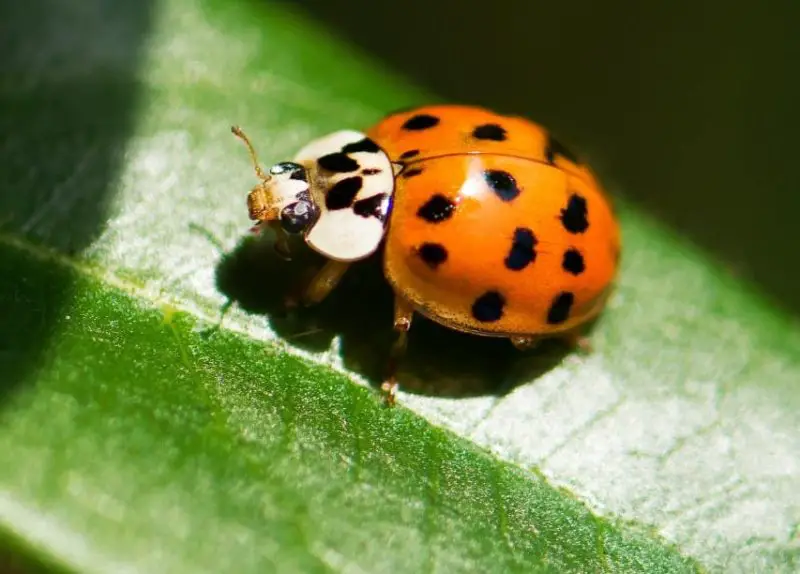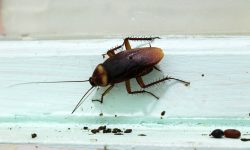When you see a bright orange ladybug crawling on your plants, you might wonder, are orange ladybugs poisonous? Many people have encountered these striking insects in their gardens and have raised concerns about their safety.
This article will explore the truth about orange ladybugs, their habits, and whether or not they pose a threat to humans or pets.
Understanding Orange Ladybugs

Ladybugs, also known as ladybird beetles, belong to the family Coccinellidae. They are typically characterized by their rounded bodies, bright colors, and distinctive spots. While most people associate ladybugs with red bodies and black spots, orange ladybugs are a variation that some species exhibit. The orange coloration is due to specific pigments and can vary in shade and intensity based on species and environmental factors.
Some of the more common orange ladybug species include the two-spotted ladybug and the Mexican bean beetle. Both of these species can be found in gardens, agricultural fields, and various ecosystems. Understanding the species is vital, as it helps determine their behavior and ecological roles.
Are Orange Ladybugs Poisonous?
The short answer is no, orange ladybugs are not poisonous. While some insects produce toxins as a defense mechanism against predators, ladybugs are generally harmless to humans and pets. In fact, ladybugs are known for their aposematic coloration, a strategy that warns potential predators of their unpalatability.
Although some ladybug species, such as the Asian lady beetle, may secrete a fluid that can cause skin irritation, this fluid is not toxic or lethal. Most interactions with ladybugs will not result in any adverse reactions, making them safe to handle and observe.
The Benefits of Orange Ladybugs in Gardens
Orange ladybugs, like their red counterparts, are beneficial to gardens and ecosystems. They are natural predators of aphids, mealybugs, and other pests that can damage plants. By keeping pest populations in check, ladybugs contribute to healthier plant growth and reduced need for chemical pesticides. This makes them valuable allies for gardeners and farmers alike.
In addition to their pest control capabilities, ladybugs also play a role in pollination. As they move from plant to plant in search of food, they inadvertently transfer pollen, aiding in the fertilization process of many flowering plants. This symbiotic relationship between ladybugs and plants enhances biodiversity and contributes to the overall health of the ecosystem.
Differences Between Orange and Other Ladybug Colors
While the focus of this article is on orange ladybugs, it’s essential to recognize the differences between them and other ladybug colors, such as red and yellow. The primary distinctions include:
- Coloration: Orange ladybugs typically exhibit an orange body with black spots, while red ladybugs are bright red with similar spot patterns.
- Size: Orange ladybugs are generally smaller than red ladybugs. Most orange species measure between 5 to 8 millimeters in length, while red ladybugs can reach sizes of up to 9 millimeters.
- Habitat Preferences: Orange ladybugs tend to inhabit woody areas and shrubs, whereas red ladybugs are often found on herbaceous plants.
- Feeding Habits: While both types feed on aphids, some orange ladybug species may also consume other small insects or nectar.
Understanding these differences can help you identify the specific type of ladybug you encounter in your garden, allowing for better pest management and conservation strategies.
What Happens If You Get Bitten?
Though orange ladybugs are generally harmless, you might wonder, what happens if you get bitten? Ladybugs do have the ability to bite, but their bites are typically mild and not harmful. The bite may feel similar to a pinprick and usually does not result in any serious injuries or reactions.
If you do experience a bite, cleaning the area with soap and water is advisable. Applying a cold compress may help reduce any minor swelling or irritation. In rare cases, individuals with sensitivities may experience mild allergic reactions, but these instances are uncommon.
Common Myths About Ladybugs
Several myths and misconceptions surround ladybugs, particularly regarding their safety and behavior. Here are some of the most prevalent:
- Ladybugs Are Poisonous: As discussed, ladybugs, including orange ones, are not poisonous to humans or pets.
- Ladybugs Bite: While ladybugs can bite, their bites are usually harmless and not a cause for concern.
- All Ladybugs Are Beneficial: While most ladybugs are beneficial for gardens, some species, such as the Mexican bean beetle, can damage crops and plants.
- Ladybugs Bring Good Luck: In many cultures, ladybugs are seen as symbols of good fortune. While this belief may not be scientifically supported, it reflects the positive associations people have with these insects.
- Ladybugs Can Cause Allergies: While it’s possible for individuals to have allergic reactions to ladybug secretions, these cases are rare and typically not severe.
Conclusion: Embracing Orange Ladybugs in Nature
In summary, orange ladybugs are not poisonous and are, in fact, beneficial insects that play a vital role in maintaining ecological balance. Their striking appearance and pest control abilities make them valuable allies in gardens and agricultural settings.
Understanding the facts about orange ladybugs can help dispel common myths and encourage a greater appreciation for these remarkable creatures. The next time you spot an orange ladybug, remember that it is a friend to your garden, not a foe. Instead of fearing these insects, take the opportunity to observe and enjoy their beauty and contributions to the ecosystem.
Incorporating this knowledge into your gardening practices can lead to healthier plants and a more biodiverse environment. So, let the orange ladybugs thrive in your garden, and relish the natural wonders they bring!
By appreciating and protecting these insects, we contribute to the health of our ecosystems and promote a sustainable future for all. If you encounter orange ladybugs in your garden, consider yourself lucky—they are not only harmless but also helpful!






